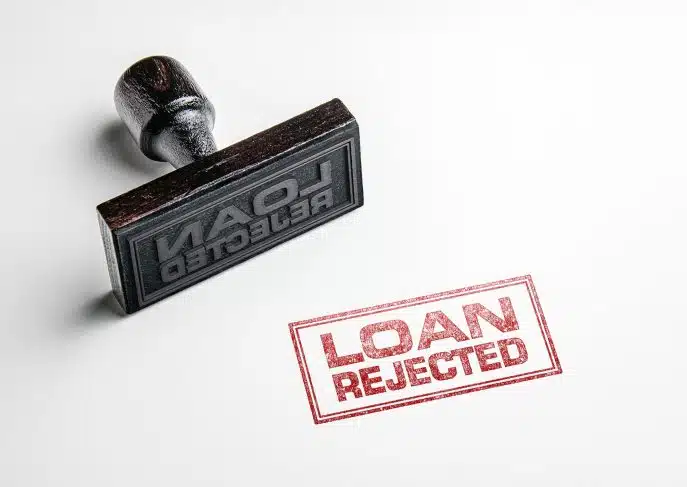Introduction: Why Low-Interest Business Loans Matter
Securing a business loan with a low interest rate can make a world of difference for your business. Whether you’re a small business owner just starting out or running an established company, the right business loan can help you manage cash flow, invest in new opportunities, and strengthen your overall financial health. Low-interest business loans mean lower monthly repayments and reduced borrowing costs, freeing up more capital to reinvest in your business. By choosing the right business financing, you can support your business goals, weather unexpected challenges, and set your business up for long-term success. Understanding your loan options and how they impact your financial situation is the first step toward making smart, sustainable decisions for your business.
Types of Business Loans
When it comes to business loans, there’s no one-size-fits-all solution. Businesses can choose from a variety of loan types, each designed to meet different needs and circumstances. Secured business loans require you to offer collateral, such as commercial property or equipment, which can help you access larger loan amounts and lower interest rates. Unsecured business loans, on the other hand, don’t require collateral and are often a popular choice for small businesses or startups looking for quick access to funds. Other business loan options include a line of credit, which provides flexible access to funds as needed, and a business overdraft, which allows you to overdraw your account up to an approved limit. Invoice factoring is another option, letting you unlock cash tied up in unpaid invoices. By understanding the different types of business loans, you can choose the loan that best fits your business’s needs and growth plans.
When you’re running a small business, every bit of capital counts. One of the ways you can save money is by picking the right type of loan.
Do you know what your options are with secured and unsecured business loans? If you don’t, you’re leaving a lot of money on the table by choosing less-than-ideal financial products.
There are different loans based on the loan term, loan amount, credit history, and a lot of other criteria. Knowing the differences will help you find the perfect one for you. Established businesses with a longer trading history may qualify for lower interest rates and better loan terms.
What you need to consider first is how you’ll be using the loan. This is where people tend to make a mistake. Lenders require clarity on business purposes for the loan, and funds should be used to support business growth.
A loan gets you cash, certainly, but you have options based on the purpose of that cash. A loan used to buy equipment isn’t the same as the one you’ll use to cover payroll. Even though they’re both loans, their terms and conditions will be very different.
Before you apply for a business loan, take a look at these options and choose the right fit. Preparing a business plan and gathering financial documentation, such as recent bank statements, can strengthen your application.
Invoice Financing
Invoice financing is a great option for businesses that tend to have long waiting periods for receivables. They’re essentially a way to leverage your invoices to increase immediate cash flow. Outstanding invoices can be used as collateral in invoice financing solutions, allowing businesses to unlock funds tied up in unpaid receivables.
This is also known as factoring. In short, you sell any amount of your unpaid invoices to business lenders in exchange for cash on hand.
Invoice financing is a great option for both lenders and borrowers. Your company history gives them a good idea of what to expect from your customers, making it relatively low-risk.
For Commonwealth Capital, LLC, it was a great way to hold on to a client.
When one of their clients started to run into a little trouble. Commonwealth reduced their line of credit, making a bad situation worse.
To try to work something out, they met with the client and toured their facility. After assessing the situation, they provided $350,000 to the client through invoice factoring.
That extra injection combined with the line of credit did the trick. After 18 months, the client got back on their feet and re-established their line of credit entirely.
Had it not been for the extra financing, the client might have gone out of business. And Commonwealth might have lost a client.
Equipment Finance
Another favourable but specific type of loan is equipment financing. The loan application includes the equipment that the borrower needs to buy.
This kind of loan typically doesn’t require collateral. The product issuer, that is, the lender effectively owns the equipment that the loan pays for. When you repay the loan, the equipment becomes your sole property. Whether the business owns the equipment or not can affect eligibility for the loan and influence the loan terms, such as interest rates and repayment conditions.
This is an excellent choice for new businesses that don’t meet lending criteria for traditional loans. The interest rates are relatively low compared to other options and the application processes tend to be quick.
Equipment financing saved the day for this medical startup.
HourGlass Technologies had a tough decision to make. Either outsource the manufacture of their flagship product or find financing to do it themselves.
They needed an expensive laser to manufacture it in-house. Luckily, they established a relationship with a venture funding partner.
After several meetings and discussions, they agreed on terms for an equipment loan. HourGlass was able to go into production shortly with the new equipment.
That’s the power of finding the right business lenders and the right loan. Getting financing as a new and untested company is almost impossible otherwise.
Business vehicle loans are a specific type of equipment finance, often available through banks with convenient online application processes.
Commercial Bill of Exchange
This is a very special kind of financing option. It’s effectively a variable rate instrument. The interest rate on these instruments is often influenced by the current cash rate set by the Reserve Bank of Australia. It’s basically an order to pay a sum of money at a specified date. A lot like a cheque.
It differs from a cheque in that it usually has other terms attached. It’s also not very common outside of international trade.
This option can have very low interest rates. But it usually requires a well-established business with good lending criteria. So, it’s rarely made available for SMEs.
Traditional Business Loan
Truth be told, one of the best options for low-interest financing is a simple business loan. And there’s some general advice you should follow when getting one.
This one is rarely an unsecured loan, so make sure you’ve got the collateral for it. A secured business loan is backed by assets, which can result in lower interest rates and more favorable loan terms. Also, it’s probably not tailor-made for your business. Typically, they have minimum borrowing amounts.
The biggest problem with these loans is the application process. It takes a long time. The approval process for traditional loans can be lengthy due to detailed checks and documentation requirements. So, if you’re considering a traditional business loan, don’t wait until you’re desperate.
Now, you can certainly opt for unsecured business loans. Unsecured loans do not require collateral but may require a personal guarantee from the business owner. Those protect your assets and can take less time to get. But that’s going to impact the interest rate.
If you don’t want to tie your assets to a loan, unsecured business loans are a godsend. They can provide a much-needed cash injection at just the right time. Unsecured business loans tend to have higher interest rates compared to secured loans due to increased lender risk.
One bar owner found that out to his great delight.
John’s Crow Bar had developed a good reputation within 18 months of opening. But it was time to put the space to better use.
John had already used a secured loan and hesitated to put more of his assets into loans. Small business owners often weigh the risks of providing a personal guarantee or using business assets as collateral. Instead, he approached a lender for an unsecured business loan.
The process was much faster than his previous secured loan. The capital was available just in time to expand and renovate the bar.
Small business loans are available for a variety of business purposes, including working capital, asset purchases, and business expansion.
Maybe an unsecured loan is right for you too. Reviewing your loan balance and understanding the interest payable over time is crucial for effective business finance management. Think about what you’re using as security before you commit to a traditional loan.
Short term loans are ideal for businesses needing quick access to funds for urgent needs.
When choosing the right loan, borrowed funds should be used strategically to support business growth and manage cash flow.
A business line of credit is another flexible option for managing working capital, allowing you to pay interest only on the amount drawn.
Line of Credit and Business Overdraft
A line of credit and a business overdraft are two flexible business loan options that can help you manage cash flow and handle unexpected expenses. With a line of credit, your business is approved for a set borrowing limit, and you can draw on these funds whenever you need them—only paying interest on the amount you use. This makes it ideal for covering short-term expenses or taking advantage of new opportunities as they arise. A business overdraft works similarly, allowing you to spend more than what’s in your business account up to a certain limit, which can be a lifesaver when you’re waiting for payments or facing sudden costs. Both options give businesses the flexibility to access funds quickly, making them valuable tools for maintaining smooth operations and financial stability.
Understanding Business Loan Interest Rates
Interest rates are a key factor in determining the true cost of a business loan. The rate you’re offered can depend on several factors, including the type of loan, the loan term, and your business’s credit history. Business loans may come with fixed interest rates, which stay the same throughout the loan term, or variable interest rates, which can change over time based on market conditions. Fixed rates offer predictability in your monthly repayments, while variable rates might start lower but could increase, affecting your overall borrowing costs. When you compare business loans, it’s important to look beyond just the advertised interest rate—consider the total cost over the life of the loan, including any fees or charges. By understanding how interest rates work and what affects them, you can make informed decisions about your business financing, whether you’re seeking a short-term loan to cover immediate needs or a long-term business loan to support major investments. Always review your options carefully to find the best fit for your business’s financial situation and goals.
Look Before You Borrow
You can’t always predict when you’ll need some extra capital for your business. But if you become familiar with your options, you’ll always make the right choice.
When you’re thinking about getting a loan, think about the purpose and your resources. What do you need the loan for and what basis can you provide for it?
Even if you need a loan the next business day, you can find someone that will provide it. But the terms are going to ruin you, so stay on top of the game.
If you’re thinking about getting a loan, let us help you find the right one. At Unsecured Finance Australia, we can walk you through your options. You can apply in only five minutes using our online application form.




